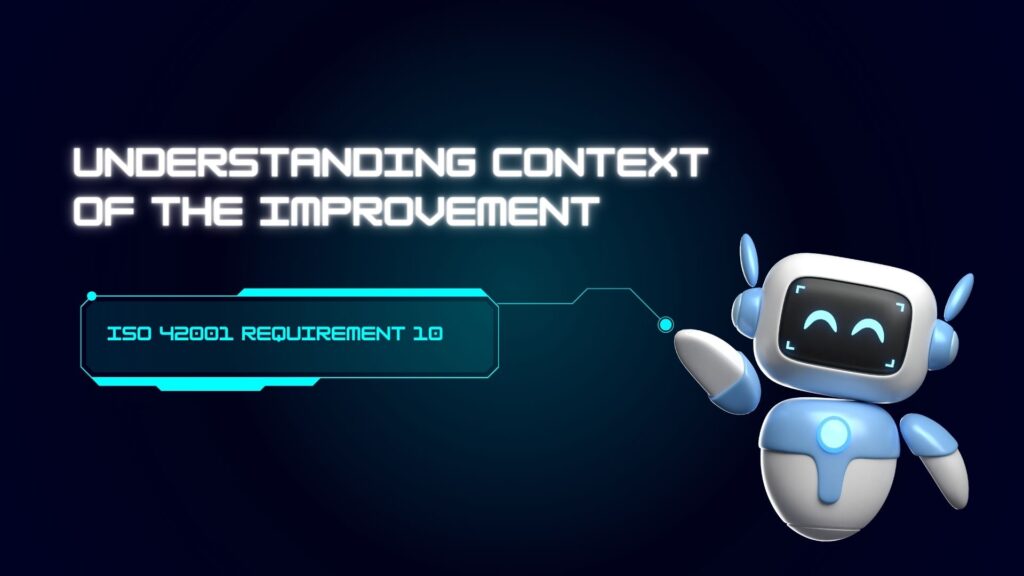Introduction:
ISO 42001, the international standard for energy management systems, emphasizes continuous improvement as a fundamental principle. ISO 42001 Requirement focuses specifically on improvement, urging organizations to enhance their energy performance continually. In this article, we delve into the context of Requirement 10’s improvement, exploring its significance, implementation strategies, auditing techniques, and providing examples to illustrate its practical application.
Significance of Requirement 10 Improvement:
Improvement is at the core of sustainable energy management. By continually enhancing energy performance, organizations can reduce costs, mitigate environmental impact, and enhance competitiveness. Requirement 10 underlines the necessity of establishing processes for identifying, prioritizing, and implementing energy performance improvements.
Implementation Strategies:
Implementing Requirement 10 involves several key steps:
1. Establishing a Baseline: Organizations must first establish a baseline for energy performance by analyzing historical data and current energy consumption patterns.
2. Setting Targets: Clear, measurable targets for energy performance improvement should be established, aligning with the organization’s strategic objectives.
3. Identifying Improvement Opportunities: Through energy audits, process analysis, and stakeholder engagement, potential improvement opportunities can be identified.
4. Prioritization: Not all improvement opportunities are equal. Organizations must prioritize initiatives based on factors such as feasibility, impact, and cost-effectiveness.
5. Implementation: Executing improvement initiatives requires effective project management, resource allocation, and monitoring to ensure targets are met.
6. Review and Adjustment: Regular reviews of progress against targets allow for adjustments to be made, ensuring continuous improvement over time.
Auditing Techniques:
Auditing plays a crucial role in verifying compliance with Requirement 10 and identifying areas for improvement. Auditing techniques may include:
– Energy Audits: Comprehensive assessments of energy use across facilities, identifying inefficiencies and recommending improvements.
– Process Audits: Evaluating energy-intensive processes to identify opportunities for optimization and energy savings.
– Documentation Review: Examining records and documentation to ensure that improvement initiatives are adequately documented and implemented.
Examples:
– Installation of energy-efficient lighting systems to reduce electricity consumption.
– Implementation of energy management software to track and optimize energy usage in real-time.
– Adoption of renewable energy sources such as solar panels to reduce reliance on conventional energy sources.
Conclusion:
Requirement 10 of ISO 42001 emphasizes the importance of continual improvement in energy management. By establishing robust processes for identifying, prioritizing, and implementing improvement initiatives, organizations can enhance energy performance, reduce costs, and contribute to a sustainable future. Through effective implementation strategies and auditing techniques, organizations can ensure compliance with Requirement 10 while driving meaningful progress towards their energy management goals.
FaQs:
- What is ISO 42001?
- What is Requirement 10 of ISO 42001?
- Why is Requirement 10 improvement important?
- What are some implementation strategies for Requirement 10 improvement?
- What auditing techniques can be used to ensure compliance with Requirement 10?
——————————————————————————————————————–
Infocerts, 5B 306 Riverside Greens, Panvel, Raigad 410206 Maharashtra, India
Contact us – https://www.infocerts.com

